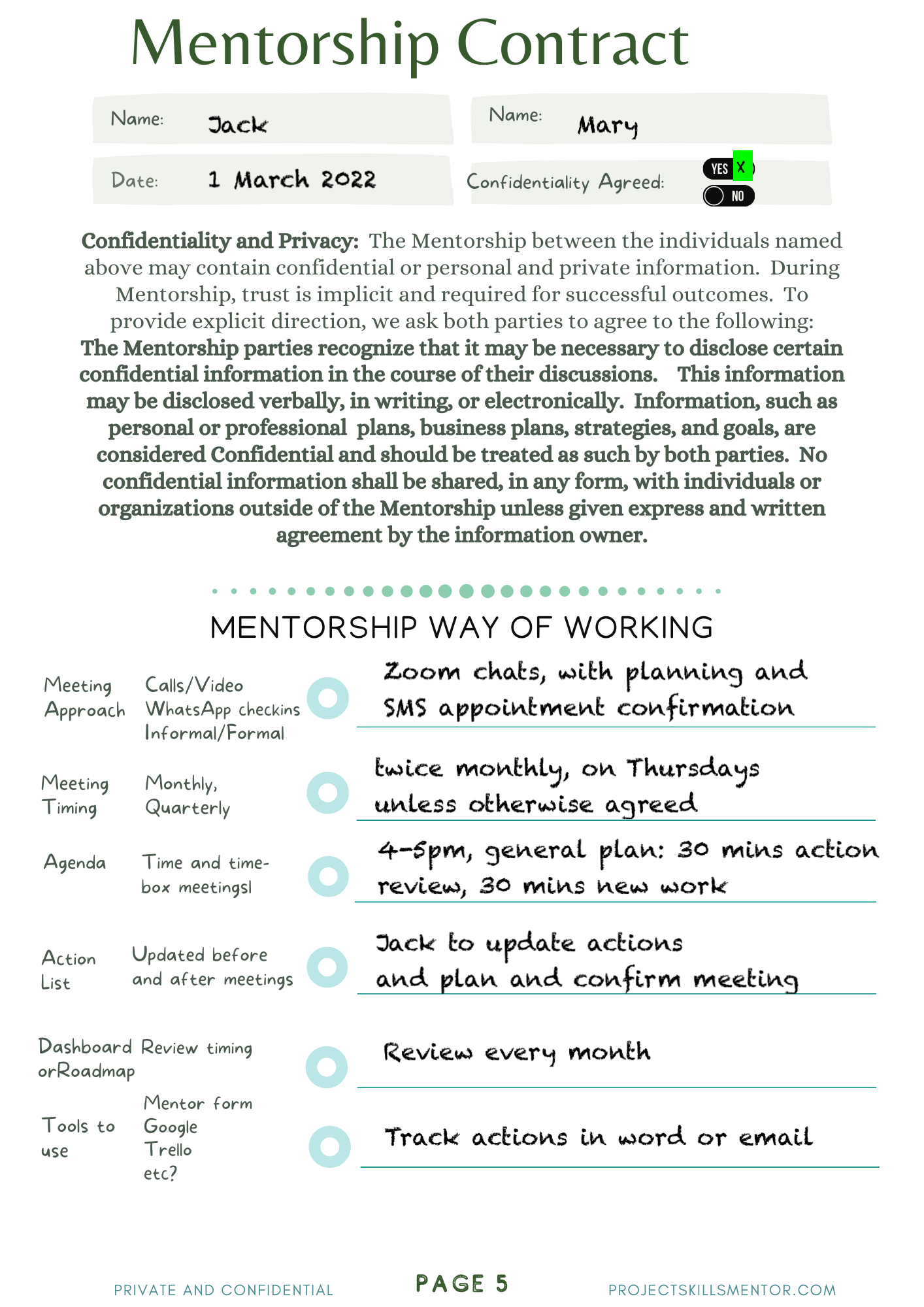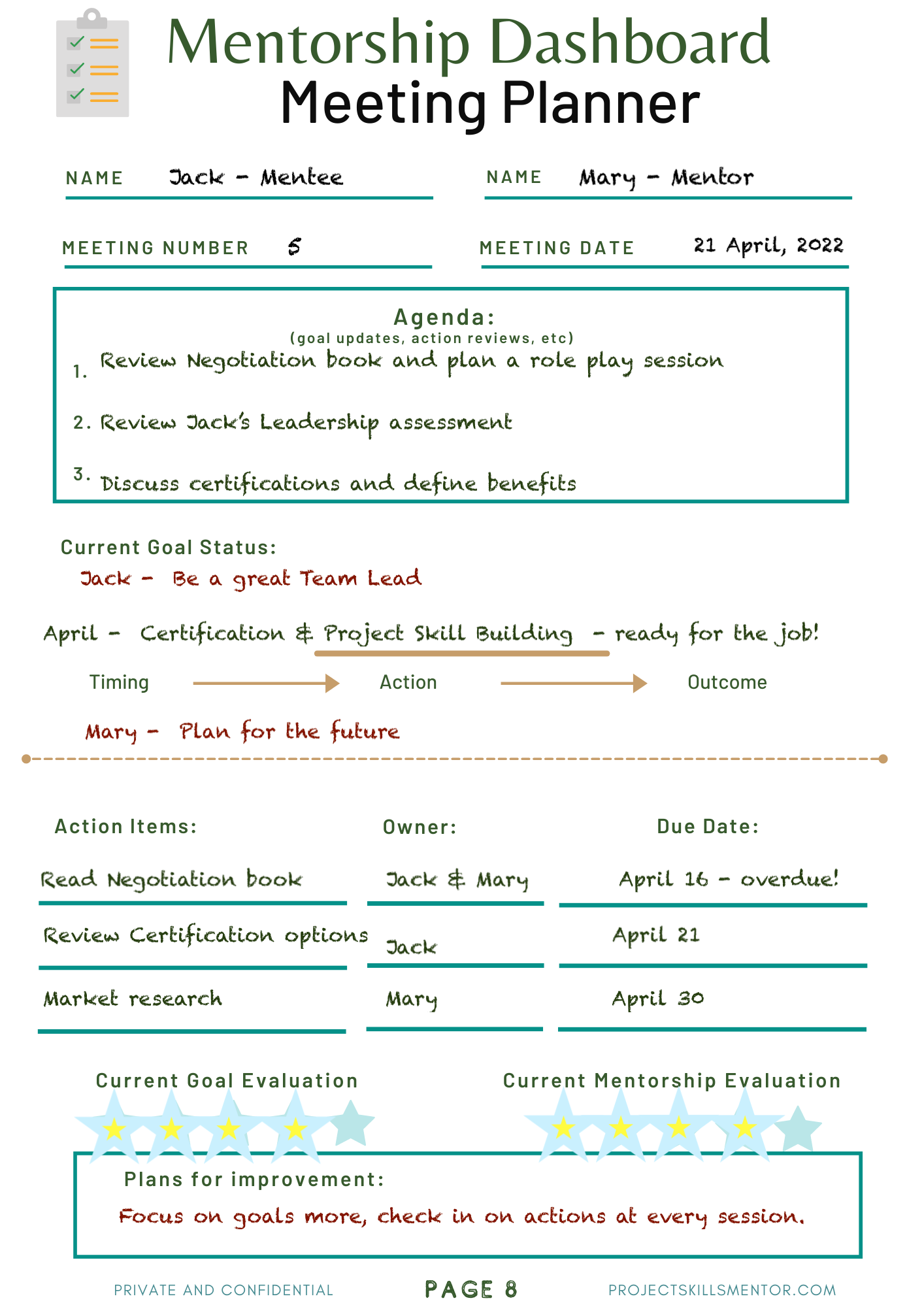How to Start Mentoring
Are you aware of the benefits of Mentoring? Did you know that mentoring increases overall performance, improves career advancement, and provides higher work-life satisfaction? Mentoring brings these benefits to both the mentor and the mentee. With these benefits in mind - are you ready to start mentoring? If you are, get my free downloadable - updated for 2022!
How to get the most out of Mentorship?
Understand the Value
Use a Process
Benefit from Lessons Learned
While 76% of working professionals believe that a mentor is important to growth, more than 54% do not have such a relationship.
Mark Horoszowski, Harvard Business Review
Get the free updated Mentoring Workbook available below. Or go get the 2023 Version of the Interactive Workbook here.
Why do you think so many people know the benefits but don't use mentoring? Maybe because they don't know how to get started. Let's talk about a few "blockers" first.
Are you unsure of where to start?
Think about what type of Mentoring is right for you. This 1-minute video summarizes 3 types of mentoring.
In addition, I have videos and blogs on the different type of mentoring. Review them to get an idea of which approach is best for you.
Get a better view of your goals - start with Self Mentorship.
Share and learn from others similar to you - Peer Mentoring may help.
One-on-One mentoring discussions - you may be ready for Mentorship described below - so read on.
Are you wondering how to find a Mentor?
Finding a mentor can be the hardest part of the process. I get it - it’s been especially difficult to network in these past two years. I have suggestions in this 1-minute video. Or check the blog for more details and a chart on the best place to find the right mentor for you.
Do you need to get your goals clear?
If you think you need to get clear on your goals before starting a Mentorship - you are correct. I have videos and articles on Goals and Self Assessment. Both articles include downloadables that you can use to clarify where you are and what you need from Mentoring.
Ensuring mutual value from the experience
The Value of Mentorship, like everything else, is based on what you put into it. Your results are based on the processes effectiveness and the effort you make to listen, learn and take action. Mentorship can help you reflect on your goals and build the skills you need to improve them. But, you must put those insights and tools to work to realize the benefits.
Mentorship is not a one-way street. Your age, experience, or expertise has nothing to do with the value you bring to the table. You have just as much to contribute as those seemingly more experienced than you. Cynthia J. Young, Harvard Business Review
Also, some believe Mentorship only benefits the mentee. Thinking that mentoring does not impact the Mentor role is a lost opportunity. Everyone has experiences, knowledge, and insights. And each of us likes to be valued and add value. Sharing insights and discussion makes conversation richer. Mentorships that recognize that both people have life story experiences, cultural differences, and skills provide the ultimate value. This value leads to better results at work for both the employees and the companies which support mentorships.
A Gartner study found much higher retention rates for mentees (72%) and mentors (69%) than other employees who did not participate in the mentoring program (49%).
Marianna Tu and Michael Li, Harvard Business Review
Getting the Mentoring Process Right
Processes help us focus on the what by creating an easy-to-follow how. The Mentoring Workbook is updated based on user feedback from the past two years.
provides an easy to use Word format
includes a new page focus on the next steps
clarifies the introduction section for the Mentor and Mentee\
Let me take you through this updated process and show an example use case.
Using the Workbook - A Use Case
The Workbook is a guide to the complete Mentorship process. The document includes one-time use pages and recurring sections throughout the Mentorship. Using this word document will allow you to collate the separate components created by each person into a single shared document. In addition, you can separate the pages you will reuse for each of your Mentorship meetings.
1. Prepare in advance
Introduce yourself. The Mentoring Workbook has a page to help each partner share a few opening points.The Mentor and Mentee need to do this page separately before the meeting.
Think about what you want to share. What can help your Mentorship partner understand your background, motivations, and details that can help you connect? It may also be useful to talk about how you learn or communicate (written, discussion, visual mapping, role-playing, etc.).
Your SWOT is a great chance to show what insights you already have about yourself. Be aware that threats and weaknesses may be linked. Consider how your goals relate to your SWOT assessment.
Note: this is the Mentee example, however, the Mentor will create a similar page.
Set your Goals. Consider your goals for yourself and the goals you want to work on as part of mentoring. These two sets of goals do not have to be the same since some goals may not fit external Mentorships such as long-term, personal objectives, and goals that require on-the-job coaching.
Mentorship goals will be clearer if you can note specific outcomes or results. You will add results in the next step, so prepare to create SMART objectives as part of your goals.
Note: this is the Mentor example, however, the Mentee will create a similar page.
2. Get set for success
Your first meeting is set. Share the work you did in step 1 at the start of the meeting. Take time to discuss each person's summary. Ask questions to get a sense of your new partner.
Complete the Contract page. Focus on creating a shared understanding of the Mentorship rules of engagement. The joint agreement focuses on confidentiality and ways of working. Exchange emails and phone numbers for ease of communication going forward.
Some practical tips to keep your Workbook organized:
designate who will update the workbook
consolidate pages 2-4 into a single document
update other documents as you work together
agree to how you will share this document in the future
Create the Shared Mentorship Objectives
Create Shared Goals. Taking points from your personal pages, document the goals you will work on during this Mentorship. Be balanced, so both partners have goals to work on. You may also have common goals where ambitions overlap.
Set Shared Expectations. This is part of your social contract. So be clear about what you expect and how will be accountable for any actions as part of the process.
Build the RoadMap. Each person should select 1 or 2 goals from their share list. (noted here in red). Agree on the Mentorship timeframe. Next, create a plan to work on this goal within that timeframe. Note actions to be taken and document the outcome expected. Update this document at the start or end of each meeting, as needed.
3. Stay results focused
Create your Agenda. Before your first meeting ends, plan for your next meeting. Keep the agenda simple to allow enough time for discussion. Note preparation for future meetings such as role-playing or draft content to review. Update this document before every meeting. Start by reviewing actions, then go through the Agenda and update actions for the next meeting.
Evaluate
the Mentorship. Allow some time for the relationship to establish and the goal actions to start before beginning this task, but after the 2nd or 3rd meeting, it is helpful to evaluate the Mentorship. Be honest about the effectiveness of the process and the relationship. Be open to feedback.
Note: make changes to the box and follow up on these at the next meeting.
Plan and Evaluation. Complete this page together as your Mentorship comes to completion of its agreed timeframe or goals. Focus on your accomplishments as part of the Mentorship process.
Look back to lessons learned and forward to future actions which will help you maintain the focus and momentum you have created.
Note: document your plans to continue skill building with certifications or other learning plans.
Benefiting from the Lessons learned
As a long-time mentor, I am always learning. Let me share some lessons learned over the past few years.
Plan regular meetings. Set up meetings in advance to give continuity to your conversations and the work to be done in between meetings.
Manage the meetings. We all have busy schedules. Use the Contract to agree to the meeting schedule. Also, consider a messaging app to confirm meetings to avoid "no shows" or calendar mix-ups.
Listen before Talking. Give time to get to know your Mentoring partner and understand their goals before offering advice. Don't assume you have experience with the situation. If in doubt, check for understanding first.
Focus on your purpose. Start with a plan and regularly review it. The Shared Goals, Roadmap, and Agenda are working documents. Use them to start your Mentorship, and at each session (or at least every few sessions), keep your conversations focused on the outcomes both parties are working toward.
Set reasonable expectations. Being realistic about what is possible is key to your success. After the introductions, make a roadmap that you can accomplish given the time and effort available to both parties.
Do the Work. Realize that the mentorship conversations are not the work. The meetings are the checkpoints. The work is in the learning outside of the meetings. Putting ideas into practice, building your skills, and developing new behaviors require focus.
Track progress. Use the Workbook to track both goal outcomes and the mentoring process. Address issues and revise the goals or process as needed.
Look Ahead. When you feel the mentorship process is coming to an end, look ahead for what is next. Plan for future actions. This can include continuing your Mentorship with a new Roadmap and Goal plan or moving on to a new Mentorship. Either way, looking ahead will keep your momentum going.
Celebrate the Mentorship. When the Mentorship ends, take time to review the results and thank your mentoring partner for taking the journey with you. Mentorships may not last forever, but the relationship can - and that would be great.
If you are looking for a way to build skills, confidence, and work with others, consider mentoring. I hope you use the process above to get started. Please leave a comment if you have ideas on future updates to the document or other topics you'd like me to cover. Thank you!












